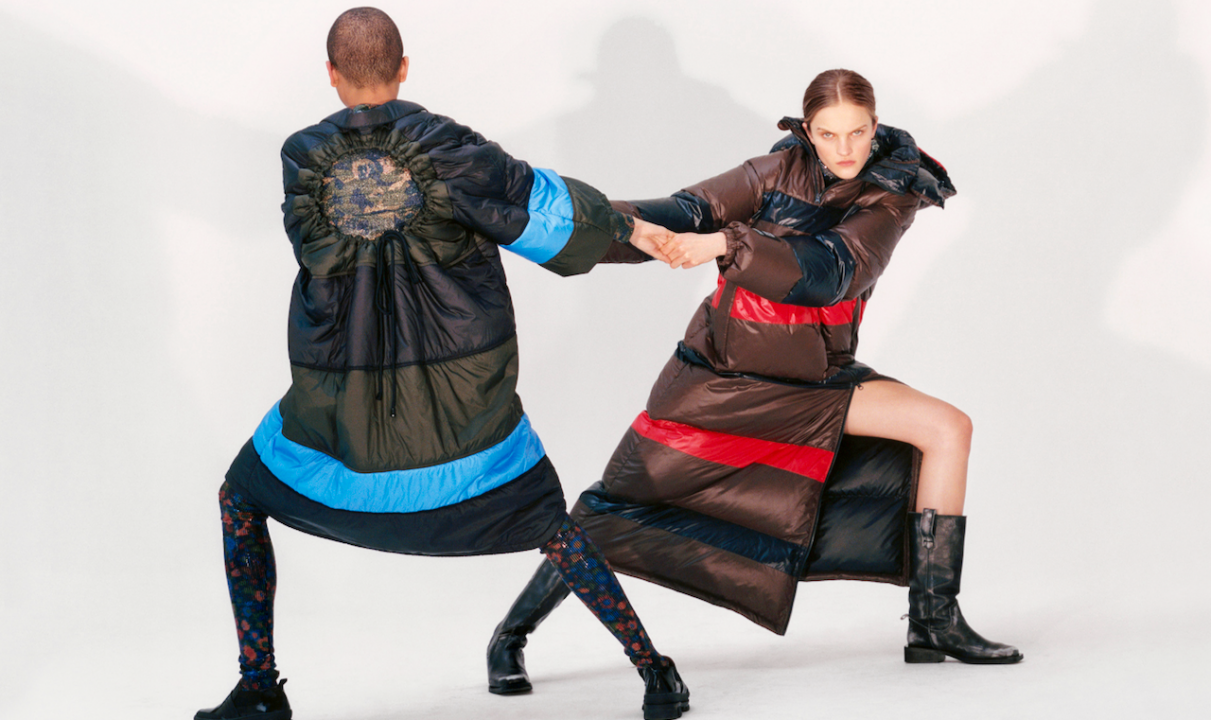By Far is a four-year-old Bulgarian accessory label winning over a large number of Chinese followers. It already has over 4,500 mentions on shopping platform, Little Red Book, and it's “Rachel” bag is vying for the coveted title of China’s newest “It” bag.
Emerging handbag brands like By Far have captured the Chinese consumer imagination recently, witnessing a growth in popularity and a sharp rise in awareness. Yet, without the added legacy of traditional luxury handbag brands normally preferred in China, how exactly do these niche brands gain their share of the highly competitive handbag market?
Firstly, in the West, emerging brands’ merchandising is deeply rooted in Instagram. Admittedly, while there are limited users of the app in mainland China (it can only be accessed via the use of a VPN), labels that value their Chinese fans on the platform see more benefits. Recently, the BoF report “Instagram Does Matter in China. Here’s How Brands Can Use It” shed light on Instagram’s indispensable influence on boosting brands’ presence in the mainland. Users of the app are seen as open-minded and sophisticated and are therefore not only targeted consumers but can function as the link between them and other potential followers. As well as By Far, this Instagram-focused strategy has brought success to other emerging brands such as Manu Atelier, Staud, and Cult Gaia who are also trending on social media wish-lists.
Admittedly, it is difficult for newer labels to compete with luxury houses’ billion-dollar business. However, their ability to tell stories that captivate local shoppers is helping facilitate connections with purchasers. Whereas luxury brands often struggle to react swiftly to the market, smaller businesses can adapt in real-time. Therefore, a localized and elasticated social media approach enables these designers to fully capitalize on China’s highly-developed e-commerce opportunities.
Celebrity endorsements can also significantly drive the sales of emerging designers. By Far has been expanding unexpectedly in the West thanks to “It” girls Bella Hadid, Kendall Jenner, and Gigi Hadid. In Asia, fans include Jennie Kim, a member of popular South Korean group Blackpink, which has a considerable fanbase in China. Brands similar to By Far are also tapping Chinese KOLs who have experience living overseas and are active on local social media as well as Instagram — these include Canadian-based fashion and beauty KOL @Oh_Emma, fashion blogger @Savislook, and Paris-based influencer @Gxiayan. Collaborating with such names can drive domestic and global traffic simultaneously: a gifted-handbag shared on such KOLs feeds help brands reach broader domestic consumers.
E-commerce additionally plays a vital role in raising awareness of these niche brands and much can be attributed to overseas e-retailers such as Shopbop, Farfetch, and Net-a-Porter. These online shopping destinations customize Chinese language websites, provide convenient delivery to China and offer targeted promotions and discounts. Their Chinese-friendly features facilitate personalised storytelling while flexible return and exchange policies encourage shoppers to be daring — to try new brands not previously on their radar. Affordable luxury e-tailer Shopbop, for one, has successfully promoted emerging brands to Chinese customers. Net-A-Porter on TMALL and Moda Operandi’s Mini Program now available on WeChat also offer easy access to more unusual brands.
This flexible transition from social media to e-commerce offers labels more diverse digital solutions to infiltrate the market. From Weibo to Taobao, and WeChat posts to Mini Programs, online traffic can be driven across multiple platforms, instantly. For example, WeChat’s online mini-store “Mr. Bags with Farfetch” shows that a seamless transition from browsing WeChat posts to on-site shopping (similar to Instagram’s shopping feature) often increases purchases.
Brick-and-mortar naturally plays a role too. Stockists like local department stores including Lane Crawford and independent fashion retailers across tier-1 and tier-2 cities (from Chengdu to Ningbo) means emerging brands can build an offline presence as well. Buyers familiar with their local market can go a long way in helping brands to communicate with targeted shoppers. Brands themselves are developing stabler and more direct relationships — and reaping the rewards.
A direct-to-consumer entry model keeps prices down for emerging players while attention from buyers often follows - and a segway into department stores and e-retailers. By Far uses the direct-to-consumer sales model. To further encourage purchases onsite it uses a Chinese-language option and offers product delivery; it waives international shipping fees and rewards include reposts and shout-outs on the official Weibo account. And so far, it's working: By Far has managed to establish itself as a coveted niche label.
The identification of a “niche” brand is exciting to Chinese consumers yet these strategies do not result in a wider consumer base; instead, insider exclusivity is driving this niche cult. Previously, in the report, “How Niche Western Brands Are Accidently Gaining China Market Share” Jing Daily has highlighted the allure of such labels, one that: “speaks to a Chinese person’s psychological need for self-differentiation and individuality.” For this group of followers, design innovation and individualism is a far more powerful statement than the logos of Louis Vitton or Gucci’s monograms. Discreet signature styles have become invisible logos to showboat individual status.
Handbags are not the only segment to experience a rise in appeal of niche brands. However, designers must enrich the meaning of the word in their specific sector and brands need to convince fans of the specialities of their products by foregrounding craftsmanship, quality, and small-batch production yet these attributes do not simply guarantee sales by themselves. In China, niche suggests something entirely oppositional to the popularity of “It” bags and a brand that self-identifies as niche is expected to offer some additional value. Potential fans are already well-acquainted with luxury and fashion; incorporating high-quality leather, provenance, and authentic innovation into brands’ storytelling is necessary to ensure they stand out in a competitive market. To navigate the Chinese handbag market successfully, emerging brands must also be flexible enough to speak to local consumers, build genuine brand relevance, and deliver exclusive experiences.


